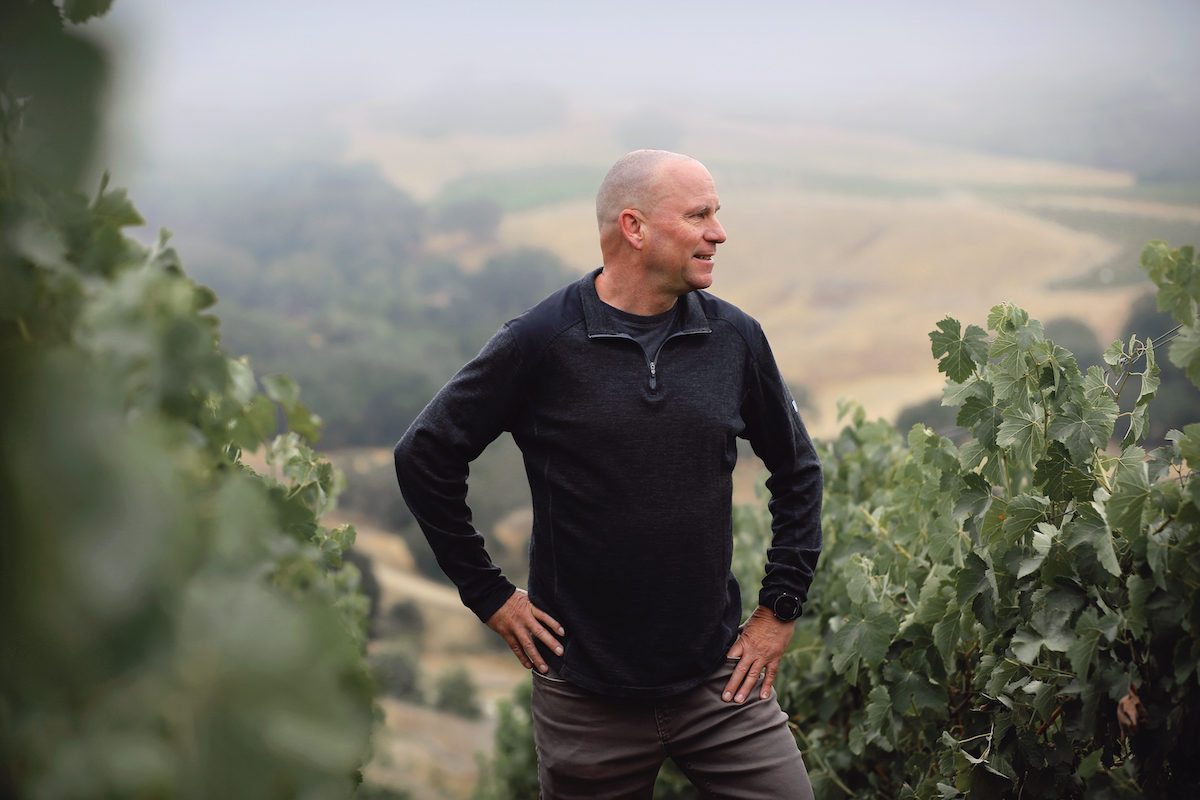Winemaker Steve Fennell Tries Small and Solo
Longtime Leader of Bigger Santa Barbara County Brands Launches His Own Eponymous Label

Steve Fennell’s connection to wine is rooted in, of all places, the balmy flatlands of Florida.
The state’s tropical heat and humidity isn’t ideal for growing fine wine vines, but that’s what got his grandfather, Joseph E. Fennell, wondering why native grape species thrived in so many regions of the world, whereas Europe’s coveted Vitis vinifera required more temperate climes. A plant breeder by profession, Fennell began hybridizing indigenous North American vines with European ones, experimenting with groundbreaking combos in Florida, Puerto Rico, and Costa Rica from the 1930s until his death in 1990.
“He was not the first to put forward the idea of using native wild varieties as the basis for a cultivated grape suited to Florida and the tropics,” wrote his son, and Steve’s dad, Lee Fennell in a paper presented during the Florida Grape Growers Conference in 1991. “But the evidence clearly suggests that Fennell was indeed first — and for a while alone — in actively pursuing this approach to grape breeding in a systematic way on a relatively large scale. And to this day, he appears to stand alone in the intensity and scope of his search for promising wild varieties.”

Grandpa’s work was eye-opening to a young Steve, who was raised in Stockton, where his dad taught at the University of the Pacific. “I always thought it was really fascinating,” recalled Fennell recently. “It got me thinking about vines.”
While studying geology and geography at UCSB, Fennell worked for Heinz in the summer, researching tomato breeding for the ketchup king, and started tasting wine in the nascent Santa Ynez Valley. “It hit me as an epiphany one day that wine production and grape growing encapsulates all of my areas of interest, from agriculture to the aesthetics of winemaking to the physical labor,” he explained. “And then the fact that all the premium wine-growing regions of the world tend to be in beautiful places with beautiful climates, I thought there could be something to this.”
The grandson pursued a master’s in wine from UC Davis, worked for years in Napa and Australia, and returned to Santa Barbara County in 2006 to run Sanford Winery, when the Terlato family took over from founder and regional pioneer Richard Sanford. He was there until four years ago, when he took a job as GM of Rancho Sisquoc in the Santa Maria Valley, where winemaking lore goes back even deeper than the iconic Sanford & Benedict Vineyard.
“It’s been an absolute treat to go from one historic place to an even more historic place,” said Fennell, who oversees a wide range of concerns on the massive, 58-square-mile Rancho Sisquoc, from vineyards and winemaking to cattle and land management. “It’s such a diverse operation.”
But he’s not the hands-on winemaker at Sisquoc — that’s Steven Smith’s job — so Fennell decided in 2019 to finally make his own line of eponymous wines. “It was the opportunity to do something on a small scale so that I could have a very creative outlet and make wines that I personally like to drink,” he said. “Hopefully there are other folks out there who appreciate them as well.”
The early results impress, showing rich fruit with spice on the pinot noir, intensely fresh violet on the syrah, and brisk, rocky goodness on the chardonnay. “It has a nice texture, an acid backbone, and a definite mineral quality,” explained Fennell of the white. “That’s a pretty easy wine to pair.”
Dim sum is not the immediate inkling for wine, but that chard is a star on the weekend wine list at China Pavilion, where it decisively complements many of the three dozen or so selections. “I really like it with their dim sum,” said Fennell. “There are so many wonderful little dishes.”
The goal is to grow as demand demands, which right now is around 500 cases per vintage, sourced mostly from Peake Ranch, Bien Nacido, and Watch Hill. But he remains focused on his job at Rancho Sisquoc and his life on the Mesa in Santa Barbara, where he and his wife — who is retiring this year as a teacher at San Marcos High — manage an extensive garden of fruits, vegetables, and ornamental flowers.
It’s a home he’s proud to come home to, even after driving from the remote reaches of Rancho Sisquoc. “Being around the corner from Elings Park is really nice,” he said. “It’s a pretty pleasant place.”
See fennellwines.com.





You must be logged in to post a comment.